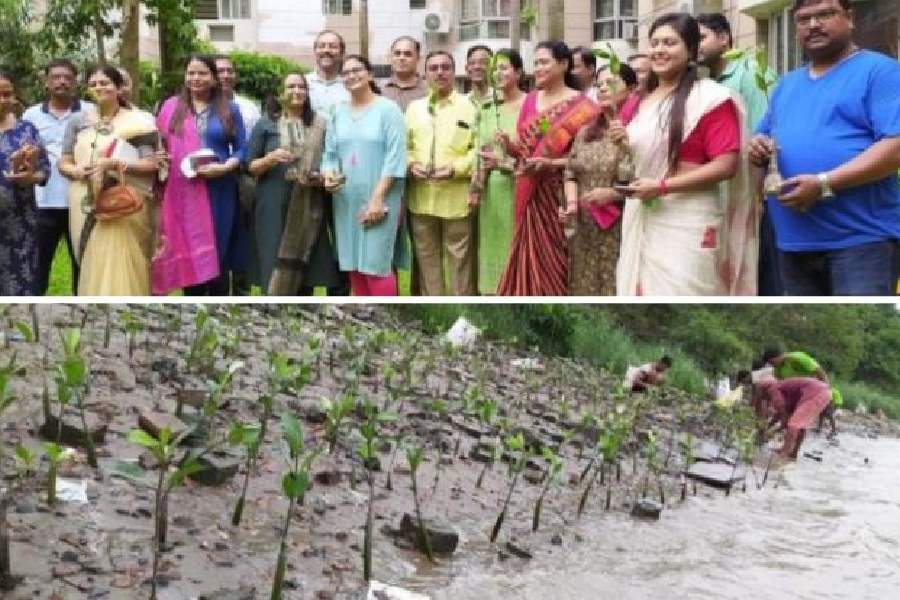Residents of Regent Ganga, a housing complex in Hooghly’s Uttarpara, have planted around 5,000 mangrove saplings along the Hooghly to prevent the erosion of the riverbank near which their homes are located. The occupants of the gated complex with 18 towers said they were trying to put up a mangrove shield to save their homes after the river advanced by 24 feet towards their residences in the past 10 years. The saplings were planted in June. The residents said they were hopeful of the mangrove shield as most of the plants survived nearly a month. Umasankar Mondal, a geography teacher and a resident of a Sunderbans village who had earned the moniker Mangrove Man for his initiative to plant lakhs of mangroves in the delta, had helped the management committee of the condominium arrange saplings and the plantation. “We were thinking about how to protect our complex from soil erosion and then came to know about the Mangrove Man who had earlier planted mangrove saplings on the campus of Chandernagore College last year. We had planted around 5,000 saplings at the end of June on the bank of the river,” said Dipak Kumar Das, secretary of Regent Ganga Flat Owners Association. “Now, we are happy as most of the saplings survived even in the river water. We are hopeful that the mangrove shield will help us protect the houses from the river erosion,” he added. The residents had planted mangrove saplings like garjan (Rhizophora mucronata), kankra (Bruguiera gymnorrhiza) and keora (Sonneratia apetala). The Serampore subdivisional officer, Samrat Chakraborty, and the chairman of Uttarpara-Kotrung municipality, Dilip Yadav, were present when the saplings were planted. The initiative comes at a time when river erosion in several Bengal districts has become a threat to the ecological balance and livelihood of people. Mondal who is also associated with an NGO that arranged the saplings said he was hopeful that those saplings would survive and help the residents get rid of the threat of soil erosion. “We have grown the saplings in water with low salinity as those would be planted along the river — miles away from the high-salinity water of the Sunderbans. We are hopeful about the survival of those plants as such saplings that had planted in Chandernagore College have survived,” said Mondal who has been working on mangrove plantations on the bank of the Hooghly. Environmentalists, however, said they found the natural growth of a species of mangrove in low salinity water on the bank of the Ganga and it could help get a shield from erosion. “A mangrove species, Sonneratia caseolaris, has been found growing naturally on the bank of the Ganga and it would certainly be a shield to save soil erosion. However, we have to wait for one or two years to see whether the rest also survive,” Punarbasu Chaudhuri, an associate professor of environmental science at University of Calcutta.










